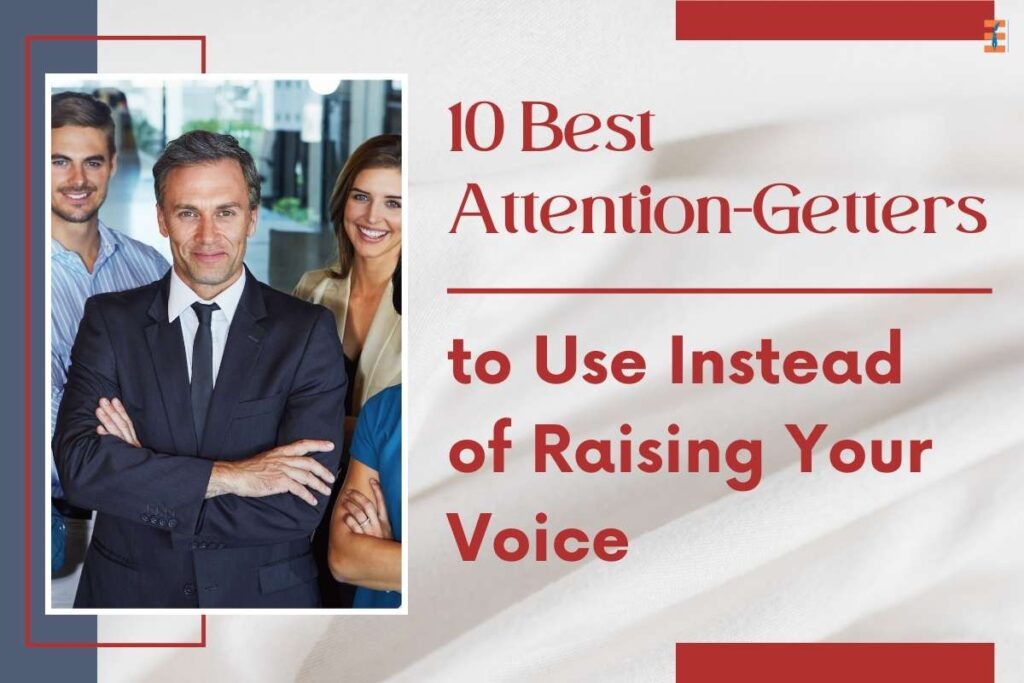Effective communication is a cornerstone of human interaction, and the ability to capture someone’s attention is an essential aspect of it. In many situations, particularly in educational settings, parenting, or professional environments, raising your voice is often seen as a last resort. While it might temporarily succeed in grabbing attention, it can also lead to negative consequences such as strained relationships and misunderstandings. Instead of resorting to vocal escalation, there are more constructive and respectful ways to employ attention-getters. In this article, we will explore seven effective attention-getters that can replace raising your voice, enhancing communication, and fostering better understanding.
10 Best Attention-Getters to Use Instead of Raising Your Voice:
1. Non-verbal cues
Non-verbal cues are a powerful tool to capture someone’s attention without uttering a word. Maintaining eye contact, using subtle gestures, or employing a simple hand raise can effectively signal to others that you require their focus. These non-verbal cues are subtle, yet they can be highly effective, especially in situations where silence is preferred, such as during a presentation or in a classroom.
2. Proximity and Physical Presence

Moving closer to the person with whom you wish to communicate is a potent attention-getter. This approach naturally conveys closeness and importance. For example, in a classroom, walking closer to a distracted student can redirect their attention without the need for raised voices. It is a non-confrontational approach that respects personal boundaries while achieving the desired outcome.
3. Silence and Pauses
Harnessing the power of silence can be an extraordinarily compelling attention-getter. Instead of raising your voice to overpower a noisy or inattentive audience, pause and allow the silence to speak for itself. People tend to break the silence, and this can redirect their attention back to you. Silence also creates a sense of anticipation and curiosity, making it a highly effective attention-getter.
4. Visual Aids
In educational and professional settings, visual aids are invaluable attention-getters. Whether it’s a captivating image, an informative graph, or an engaging video, visual aids can captivate an audience and redirect their focus. They provide an engaging alternative to verbal escalation, making communication more interactive and informative.
5. Questioning

Asking a well-timed question can be a highly effective attention-getter. When you pose a thought-provoking query, you encourage active engagement from your audience. Questions stimulate critical thinking and can refocus their attention on the topic at hand. It’s a constructive way to regain attention without resorting to raising your voice.
6. Humor
Humor is a delightful attention-getter that can instantly lighten the mood and re-engage your audience. Telling a relevant joke or sharing a witty anecdote can capture attention and create a more positive atmosphere. Laughter has a remarkable ability to refocus individuals without the need for raised voices or tension.
7. Active Listening
Engaging in active listening is a subtle yet powerful way to regain someone’s attention. When you demonstrate a genuine interest in what others have to say, it encourages them to reciprocate. Nodding, making affirming statements, and paraphrasing their words can demonstrate your attentiveness, redirecting their focus back to the conversation.
8. Personal Anecdotes
Sharing a personal anecdote related to the topic at hand can be a captivating way to capture attention. When people hear relatable stories, they become more engaged and emotionally connected to the subject. Personal anecdotes humanize the conversation and make it more accessible.
9. Novelty and Surprise

Incorporating elements of novelty and surprise into your communication can be an attention-getter that sparks curiosity. Whether it’s a surprising fact, a novel perspective, or a unique approach to the subject, these elements can make the audience more attentive and interested.
10. Engaging Content
Lastly, utilizing engaging content, such as interactive exercises, multimedia presentations, or live demonstrations, can be a powerful attention-getter. When the content is stimulating and participatory, it naturally captures the audience’s focus and encourages active involvement.
Conclusion
In various facets of life, from classrooms to workplaces and family dynamics, capturing attention is a fundamental aspect of effective communication. Raising your voice, often seen as a communication strategy of last resort, can lead to negative outcomes. By utilizing alternative attention-getters, you can achieve more effective and respectful interactions. Whether you choose non-verbal cues, proximity, silence, visual aids, questioning, humor, or active listening, these strategies offer a diverse set of tools to capture attention without the need for raised voices. Incorporating these techniques into your communication repertoire allows you to foster better understanding, maintain respectful relationships, and navigate challenging situations with grace and poise.
Also Read: Teaching Students How to Identify Credible Sources










